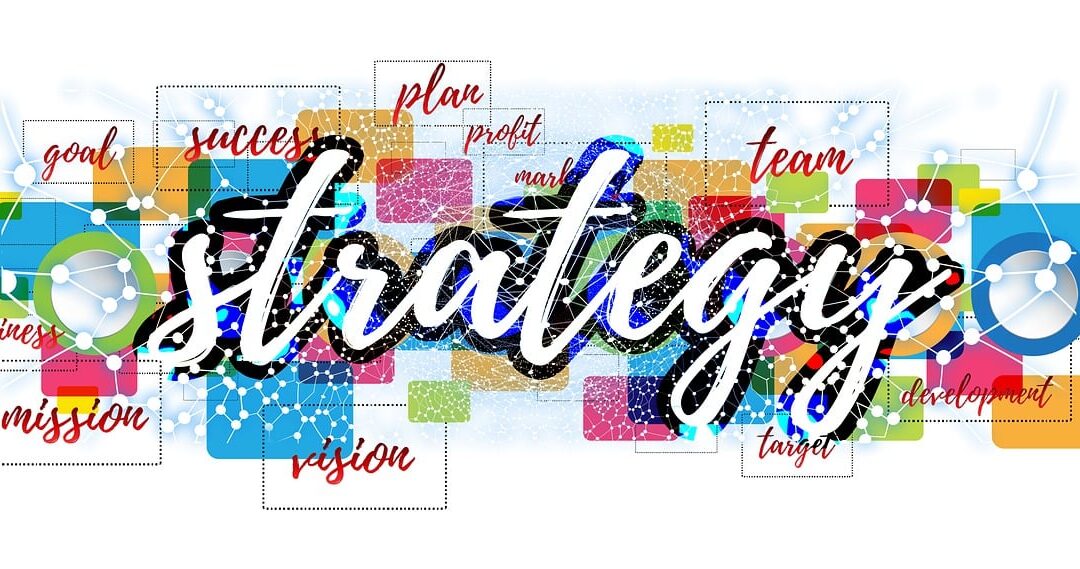
by Joy Maitland | Aug 12, 2025 | All Employees, Board Members, Board Trustees, CEO, CFO, COO, CIO, Emerging Leaders, General Managers, Heads of Divisions, Human Resources (HR)
Strategic Visibility: Turning Plans into Shared Roadmaps
(If your strategy only lives in the boardroom, you do not have a strategy — you have a secret)
Let me guess: somewhere in your organisation, there is a beautifully formatted strategy document sitting on a shared drive that only a handful of people have opened. And you think that is fine, because “not everyone needs to know everything.”
Here is the uncomfortable truth: when your plans are invisible to most of your people, you are not protecting them from overload. You are depriving them of alignment.
Gallup’s 2025 data makes the case in blunt numbers:
- Only 47% of employees strongly agree they know what is expected of them at work.
- Overall engagement is hovering at 32%.
(Gallup source)
And here is the kicker — when leaders communicate clearly, inspire confidence in the future, and share progress openly, 95% of employees fully trust them. (Gallup source)
Visibility is not just about ‘keeping people informed.’
It is about inviting them into the journey, not as passengers but as navigators. Because when people can see the route, they can adjust their own work to get you there faster.
Try these counter-intuitive visibility moves:
- Post the messy version – Share transformation drafts, not just the final polished roadmap. Let your teams see how strategy evolves and where they can shape it.
- Show the scoreboard – Create a living dashboard that updates in real time, visible to everyone, not just the C-suite.
- Name the risks – Publish the top three uncertainties you are facing. Watch how quickly people start solving them when they are not hidden.
- Shrink the updates – Instead of an annual “state of the nation” presentation, do a five-minute weekly progress video. Short, sharp, human.
Why most leaders resist this:
They fear that showing too much will cause distraction, dissent, or panic. The irony? The opposite is true. When people cannot see the plan, they make up their own — and those versions are rarely flattering or aligned with reality.
Your strategy should be like a shared map, not a locked safe. When every team member can see where you are heading, what has been achieved, and what is next, you get alignment without micromanagement, accountability without coercion, and trust without spin.
So, ask yourself: If I dropped into the break room today and asked any random person to explain our top three priorities, would I like the answer? If not, your roadmap might be beautiful — but it is still hidden.
The Right Conversation Can Change Everything. Let’s Talk.

by Atiya Sheikh | May 25, 2025 | Board Members, Board Trustees, CEO, CFO, COO, CIO, General Managers, Heads of Divisions, Leadership Development
Resilience Starts at the Top: How Leaders Can Equip Their Businesses for Disruption
In an age of constant flux, where global shocks and rapid change have become the norm, the role of a CEO has evolved. Today’s leaders must move beyond traditional responsibilities and embrace a more dynamic title: Chief Resilience Officer.
Recent research from McKinsey & Company raises a pressing concern—84% of business leaders say they feel ill-equipped to handle future disruptions, and 60% of board members believe their organisations lack the preparation to face the next major crisis. Yet, amid this uncertainty, leaders can adopt clear, actionable strategies to build resilience and position their organisations for sustainable growth.
Understanding the Five Dimensions of Resilience
To lead effectively through disruption, CEOs must recognise that resilience spans multiple dimensions. McKinsey outlines four key areas:
-
Financial Resilience – The flexibility, liquidity, and access to capital organisations need to weather setbacks and seize opportunities.
-
Operational Resilience – The agility to pivot business practices swiftly and at scale.
-
Organisational Resilience – The cultural and structural strength that enables teams to adapt and recover from setbacks.
-
External Resilience – The strength of stakeholder relationships—including clients, regulators, and investors—that stabilise and support the business.
At inemmo, we believe organisations must also prioritise a fifth dimension:
-
Digital Resilience – The ability to adapt, protect, and thrive in an increasingly digital world. This includes countering cyber threats, embracing emerging technologies, sustaining operations through digital platforms, and enhancing digital capabilities across all levels of staff.
In our global leadership work, we regularly observe how digital fragility can undermine even the most robust strategies. Digital resilience is no longer just part of operational readiness—it has become a strategic imperative.
Embedding Resilience into Organisational Vision
High-performing companies often outperform their peers because their leadership teams align under a shared, resilient vision. CEOs must set this ‘North Star’—a guiding purpose that remains steady in turbulent times.
However, many organisations fail to communicate their vision consistently during uncertainty. CEOs must take the lead in recalibrating their messaging, ensuring it connects long-term ambition with short-term responsiveness. A resilient vision inspires confidence and unifies teams navigating ambiguity.
Linking Resilience Directly to Growth
Resilient businesses don’t wait for disruption to expose weaknesses—they plan ahead. McKinsey reports that 72% of high-performing CEOs set growth targets that exceed the market average. These leaders recognise that resilience acts not only as a shield but as a catalyst for progress and innovation.
Practical actions include scenario planning, stress testing, and using periods of calm to build future capabilities. When leaders treat resilience as a growth engine, they position their organisations to seize opportunities amid uncertainty.
Investing in People and ‘Full-Body’ Resilience
Organisational strength relies on more than systems—it depends on people. CEOs must build what McKinsey describes as “full-body resilience” by addressing all five dimensions in an integrated way. Strength in one area should support others when pressure builds.
This requires investment in the adaptability and well-being of individuals across the business. Leaders should prioritise hiring and developing people who remain agile, responsive, and solution-focused—even under pressure.
Strengthening Stakeholder Relationships
In a complex, interconnected world, CEOs must show up as visible, vocal, and values-led leaders. While many executives believe in corporate responsibility, few feel that organisations take meaningful action.
Effective leaders build external resilience by cultivating strong relationships with a wide range of stakeholders—suppliers, clients, policymakers, investors, and media. These relationships grow through authenticity, consistent communication, and the courage to lead conversations on critical issues.
Final Thought
At inemmo, we believe resilient leadership goes beyond managing risk—it requires a mindset shift. In moments of upheaval, CEOs who embrace this expanded role, align their people, adapt their strategies, and build external trust will guide their organisations toward long-term value and impact.
Is your leadership team ready to become resilience architects?
The Right Conversation Can Change Everything. Let’s Talk.

by Atiya Sheikh | Mar 30, 2025 | CEO, CFO, COO, CIO, News & Articles
What a 19th-century war game reveals about strategic thinking, adaptability, and decision-making for today’s senior business leaders.
In 1824, a young Prince Wilhelm of Prussia witnessed a military simulation that would go on to change the fortunes of his army—and perhaps the shape of Europe. Kriegsspiel, a war game designed with maps, wooden battalions, and probability tables, was more than a pastime. It became an engine of innovation. Under Wilhelm’s reign, this simulation helped shape military tactics that brought unexpected success in the Franco-Prussian War. Its continued evolution laid the groundwork for predictive logistics, strategic modelling, and ultimately the birth of modern game theory.
For today’s senior leaders, the lesson is clear: when complexity reigns, the ability to model reality—rather than simply react to it—becomes a defining advantage.
Simulating Complexity
The genius of Kriegsspiel was its ability to condense an overwhelming battlefield into a controlled, analytical environment. Its relevance today lies in its approach to complexity. Senior leaders navigating volatile markets, geopolitical shocks, and AI disruption face similarly intricate challenges. The temptation is to act decisively and instinctively—but modelling, simulation, and structured experimentation are far more effective tools.
The most forward-thinking organisations are already building internal “war rooms” that operate in much the same way. They use scenario planning not simply to forecast risk, but to rehearse resilience. Supply chain breakdowns, cyber threats, and consumer shifts are gamed out with cross-functional teams, enabling adaptive strategies long before crisis strikes.
The Leadership Mindset Shift
But the power of simulation lies not in the models alone—it lies in the mindset it cultivates. Prince Wilhelm didn’t simply mandate the use of Kriegsspiel for entertainment. He institutionalised it as a learning tool, embedding it into the professional development of every officer. In doing so, he transformed a military culture from rigid tradition to experimental agility.
Modern business leadership demands a similar shift. Organisations that treat uncertainty as a problem to eliminate will remain brittle. Those that treat it as a landscape to explore—one where tactics can be tested, recalibrated, and refined—will be better placed to navigate transformation with confidence.
This requires humility as much as ambition. Leaders must be willing to ask: What don’t we know? Where might we be wrong? Which assumptions should we challenge? These questions are uncomfortable, but they’re also the entry point to deeper strategic insight.
Models Are Not the Territory
Still, simulation has its limits. Just as Kriegsspiel compressed the battlefield into a tidy map, modern tools—from spreadsheets to digital twins—are simplifications of reality. Kelly Clancy, in her wide-ranging study of how games shape perception, warns that the map can begin to distort the territory. Overreliance on models can lead leaders to prioritise what is measurable over what is meaningful.
The same caution applies to the way game theory and behavioural economics have entered boardroom thinking. When human behaviour is treated as a matter of incentives alone—as though employees, customers or partners are pure rational actors—organisational strategy risks becoming divorced from lived experience.
The best leaders recognise the utility of these models without being seduced by their elegance. They combine data with judgement, logic with empathy. They understand that metrics are tools, not truths.
Designing for Adaptability
In today’s digital environment, game-like mechanisms are everywhere. Reputation systems, social scoring, and algorithmic feedback loops all shape how value is perceived and decisions are made. Businesses too often absorb these mechanisms passively—optimising for clicks, engagement, or customer “loyalty”—without stepping back to ask whether the game they are playing is the one they ought to win.
Leadership today must be more deliberate in shaping the rules of engagement. This means designing organisations not just for efficiency, but for adaptability. It means rewarding learning, not just output. And it means recognising that agility is not the same as chaos—just as improvisation in jazz is rooted in deep discipline.
What a 19th-century war game can teach us about 21st-century leadership
What can a 19th-century war game teach us about 21st-century leadership? More than we might expect. In an age where strategy must be as fluid as the challenges it seeks to overcome, simulation becomes more than a technique—it becomes a habit of mind.
To lead effectively today is to engage with complexity on its own terms. Not to flatten it, ignore it, or hope it goes away. But to step inside it, play it out, and emerge with clearer thinking and sharper intent.
The Right Conversation Can Change Everything. Let’s Talk.

by Joy Maitland | Mar 2, 2025 | Board Trustees, CEO, CFO, COO, CIO, Managing Directors, News & Articles
Brand loyalty is more than just repeat purchases—it’s a powerful driver of business resilience and long-term growth. A prime example is the automotive industry. General Motors (GM) recently secured the S&P Global Mobility Award for Overall Loyalty for the tenth consecutive year, proving that a well-established reputation and a consistent customer experience can make all the difference.
Why Brand Loyalty Matters for Business Leaders
For business leaders, loyalty isn’t just a marketing buzzword—it’s a strategic asset. Companies that build strong relationships with their customers gain distinct advantages:
- Stability in Uncertain Times
When economic conditions shift or competition heats up, a loyal customer base provides a buffer. Customers who connect with a brand on a deeper level are less likely to be swayed by short-term price changes or alternative options.
- Lower Costs, Higher Returns
Winning over new customers is expensive. Keeping existing ones is far more cost-effective and leads to higher lifetime value. A strong customer base reduces reliance on costly acquisition campaigns and drives steady revenue.
- Reputation and Influence
Satisfied customers become your best marketing tool. They spread the word, leave positive reviews, and recommend your brand to others—helping you expand your reach without additional investment.
GM vs Tesla: A Study in Contrasts
GM’s commitment to quality and innovation has earned it long-standing customer trust. The company’s U.S. electric vehicle (EV) market share climbed to 12% in late 2024, doubling from the previous year. Consumers are responding to GM’s expanding EV range, offering more choice and accessibility. More importantly, GM understands that loyalty isn’t just about selling cars—it’s about building an ecosystem that keeps customers returning, from service plans to seamless integration with new technologies.
Tesla, on the other hand, is learning the hard way that brand prestige alone doesn’t guarantee continued devotion. European sales plummeted by nearly 50% in early 2025, leading to an 8% drop in stock value. The electric vehicle market is becoming more competitive, and Tesla faces increasing pressure from Chinese manufacturers such as BYD and XPeng, who offer high-tech alternatives at competitive prices. On top of that, uncertainties around government incentives and Tesla’s own pricing strategy have led some once-loyal customers to explore other options.
The contrast is clear: GM has successfully evolved its brand to keep customers engaged, while Tesla is struggling to adapt to shifting market conditions. Even the most innovative companies must actively nurture customer relationships to maintain loyalty.
How to Build Lasting Loyalty
To keep customers engaged and committed, businesses need to focus on three key areas:
- Consistency is King
Customers stick with brands they trust. Delivering reliable quality, service, and experiences is non-negotiable.
- Meaningful Engagement
Loyalty doesn’t stop after a sale. Strong after-sales support, personal touches, and ongoing communication keep customers invested.
- Authenticity Wins
Customers can spot insincerity a mile away. Transparency, ethical practices, and a genuine commitment to customer needs build lasting trust.
Loyalty: The Ultimate Competitive Edge
In an unpredictable world, brand loyalty is what separates businesses that thrive from those that struggle to stay relevant. Companies that prioritise customer relationships alongside innovation and operational excellence will always have the upper hand.
Tesla is facing a wake-up call—will it adjust course and reconnect with its customers, or will loyalty continue to erode? And in your business, are you doing enough to ensure customers stay with you, even when new competitors enter the market?
How is your organisation strengthening its brand loyalty strategy?
The Right Conversation Can Change Everything. Let’s Talk.




